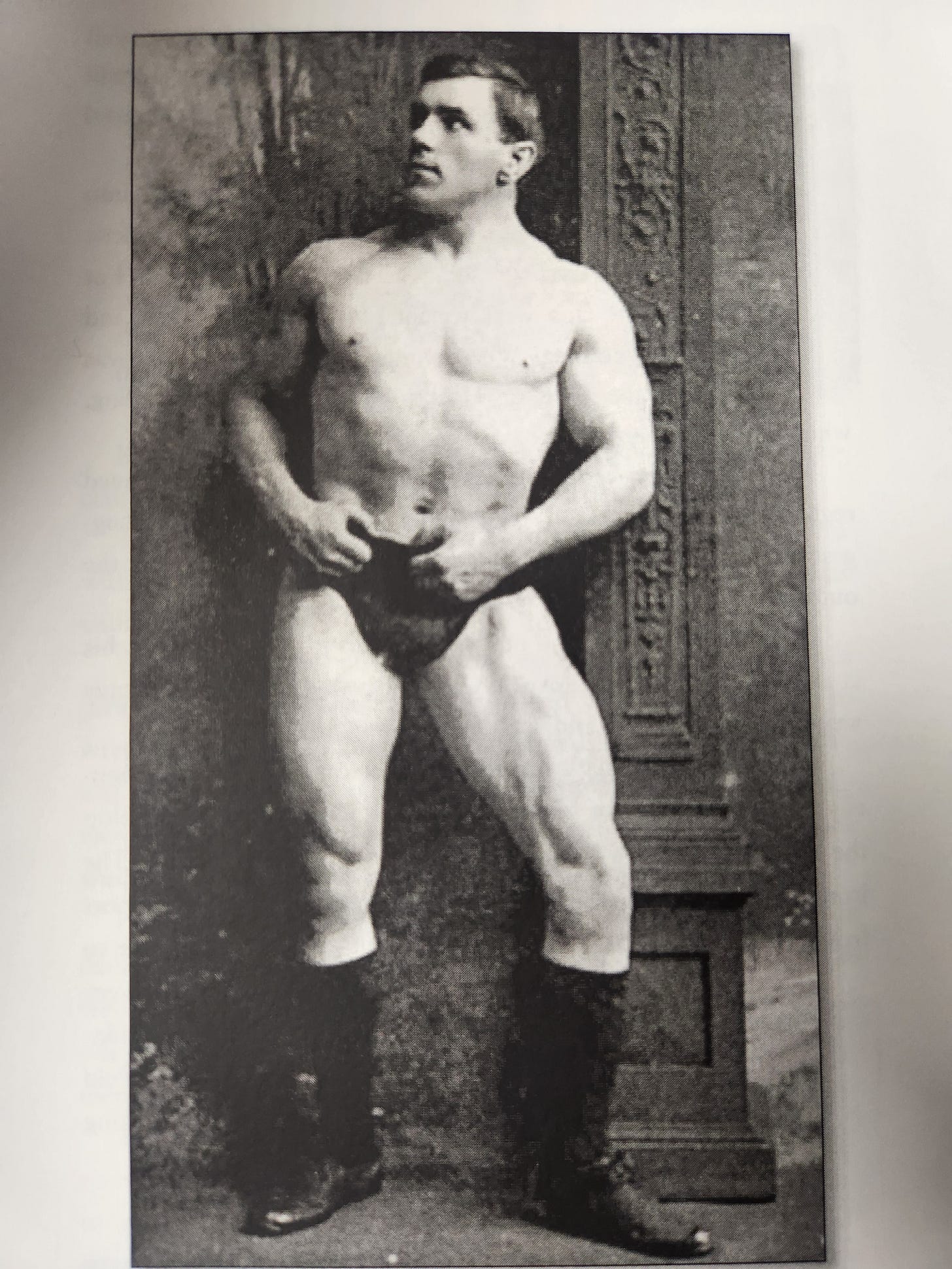“A muscle can be of high or low quality, just as may a steel spring.” -Earle Liederman

One thing I’m constantly reminded of as I read books by the founding fathers of the physical culture movement is just how ahead of their time they were. If you’re lucky enough to come across these works, you’ll see immediately that these individuals were not simply “meatheads.” They emphasized developing both the mind and the body.
Those who practiced physical culture in the Bronze Era—roughly the period from the mid-1890s through the 1930s—were strong and possessed impressive physiques. They didn’t specialize in one area of physical fitness as many do today. Nowadays, we have weightlifting, powerlifting, strongman, bodybuilding, CrossFit, and kettlebell sport, among other strength and endurance disciplines. This evolution is logical on the performance side, as it’s necessary to explore the limits of the human body. However, as I’ve stated in previous articles, the more we pursue performance, the more we risk moving away from health. I believe those of us training for health and longevity can learn a lot from the Bronze Era physical culturists.
Lessons from Bronze Era Physical Culture
Lift heavy, often, but never to excess.
Many turn-of-the-century physical culturists were performing strongmen feats, which required them to perform heavy exercises almost daily. These feats, however, were rarely at personal best levels, and most discouraged constantly testing maximum strength. Instead, they favored frequent strength training with heavy loads, executed with excellent technique and control. This training was often supplemented with daily calisthenics, light dumbbell work, running, and plenty of walking.
Train the whole body.
Body-part split routines emerged later, likely during the Silver Era (from the early 1940s through the late 1960s). Lifters of the Bronze Era, and many from the Silver Era, preferred full-body training, often 3–6 days per week. Many believed this approach produced harmonious muscle development.
Use basic exercises and simple equipment.
Bronze Era training relied heavily on barbells, dumbbells, and kettlebells lifted overhead in various press, push press, jerk, and snatch exercises. Common exercises included the pullover, floor press, bent press, push-up, deep knee bend (squat), stiff-leg deadlift, and deadlift. Variations of shoulder raises, bicep curls, calf raises, and abdominal exercises rounded out their routines. They demonstrated that you could develop tremendous strength and an impressive physique with a simple approach.
Prioritize health.
George Hackenschmidt, in his book The Way to Live: In Health and Physical Fitness, famously stated, “Health can never be divorced from strength.” Bronze Era physical culture emphasized recovery, good hygiene, breathing exercises, exposure to sunlight and nature, proper sleep, and nutrition. After all, if your health is suffering, it doesn’t matter how strong you are.
Healthy nutrition.
Most books from the Bronze Era briefly address nutrition. Some promoted a meat-heavy diet, while others preferred vegetarian-style eating. Overall, a mixed diet was seen as best. They all emphasized whole, nutrient-dense foods and discouraged excess, both in diet and in training. In The Way to Live, Hackenschmidt wrote, “I believe I am right in asserting that our Creator has provided food and nutriment for every being for its own advantage. Man is born without frying-pan or stewpot. The purest natural food for human beings would, therefore, be fresh, uncooked food and nuts.” Although Hackenschmidt ate meat, he eventually turned to a plant-based diet, as did Pyotr Krylov, the “King of Kettlebells.” It’s interesting that the debate over animal-based versus plant-based diets continues to this day.
It’s also worth noting that Bronze Era lifters achieved their impressive physique and strength without anabolic steroids or the sport supplements common today.
As I’ve gotten older, I’ve come to appreciate the simplicity of this approach, which delivered amazing results to the pioneers of physical culture. I hope you enjoyed this article and that it inspires you to use these lessons to your advantage.
Until next time, stay strong and healthy!



